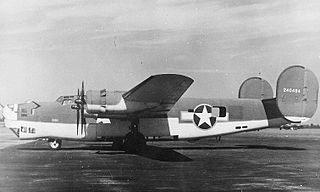| Royal Air Force Coastal Command | |
|---|---|
 | |
| Active | 14 July 1936 – 27 November 1969 [1] [2] |
| Country | |
| Branch | |
| Role | Anti-submarine warfare Commerce raiding Aerial reconnaissance Air-sea rescue Weather reconnaissance [3] |
| Part of | Royal Air Force |
| Headquarters | 1936–1939: RAF Lee-on-Solent 1939–1969: Northwood |
| Motto(s) | Constant Endeavour [4] |
| Engagements | Second World War Cold War |
| Battle honours | Arctic 1940–1945 Atlantic 1939–1945 Baltic 1939–1945 Biscay 1940–1945 Bismarck German Ports 1940–1945 |
| Commanders | |
| Notable commanders | Air Marshal Sir Frederick Bowhill Air Chief Marshal Sir Philip Joubert de la Ferté |
RAF Coastal Command was a formation within the Royal Air Force (RAF). It was founded in 1936, when the RAF was restructured into Fighter, Bomber and Coastal commands and played an important role during the Second World War. Maritime Aviation had been neglected in the inter-war period, due to disagreements between the Royal Navy (RN) and RAF over the ownership, roles and investment in maritime air power. [5]
Contents
- Formation and neglect
- Second World War
- Early war
- Mid and later war
- Cold War
- Beginnings
- Soviet threat
- Organisation
- Commanders in Chief
- Depiction in film
- See also
- References
- Citations
- Bibliography
- External links
The Admiralty's main concern until 1937 was the return of the Fleet Air Arm to the Royal Navy while the RAF concentrated on the development of a bombing force to provide a deterrent. Coastal Command was referred to as the "Cinderella Service" by A V Alexander, the First Lord of the Admiralty in November 1940. [6] Soon after RAF Coastal Area was elevated to Coastal Command, its headquarters moved from Lee-on-Solent to Northwood in northwest London.
During the Second World War, Coastal Command's most important contribution was the protection of Allied convoys from attacks by the U-boats of the German Kriegsmarine . [5] It also protected Allied shipping from aerial attacks by the Luftwaffe . The main operations of Coastal Command were defensive, defending supply lines in the Battle of the Atlantic, as well as the Mediterranean, Middle East, and African theatres. It operated from bases in the United Kingdom, Iceland, Gibraltar, the Soviet Union, West Africa and North Africa. [7] It also had an offensive capacity, in the North Sea, Arctic, Mediterranean and Baltic, strike wings attacked German shipping carrying war materials from Italy to North Africa and from Scandinavia to Germany.
By 1943 Coastal Command finally received sufficient Very Long Range [VLR] aircraft and its operations proved decisive in the victory over the U-boats. These aircraft were Consolidated B-24 Liberators and from early 1943, these and other Coastal Command aircraft, were fitted with ASV Mark III [air-to-surface vessel] centimetric radar, the latest depth charges, including homing torpedoes, officially classed as Mark 24 mines [nicknamed 'Wandering Annie' or 'Wandering Willie'] and even rockets. The Command saw action from the first day of hostilities until the last day of the Second World War.
Coastal Command completed one million flying hours, 240,000 operations and destroyed 212 U-boats. [8] [9] Coastal Command casualties amounted to 2,060 aircraft to all causes. From 1940 to 1945 Coastal Command sank 366 German transport vessels and damaged 134. The total tonnage sunk was 512,330 tons and another 513,454 tons damaged. [10] [9] 10,663 persons were rescued by the Command, comprising 5,721 Allied crew members, 277 enemy personnel and 4,665 non-aircrews. [11] A total of 5,866 Coastal Command personnel were killed in action. During the Cold War, Coastal Command concentrated on anti-submarine warfare preparations against the fleets of the Warsaw Pact. In 1969, Coastal Command was subsumed into the new Strike Command, which had also absorbed the former Bomber, Fighter and Signals Commands and later absorbed Air Support Command, the former Transport Command.


















